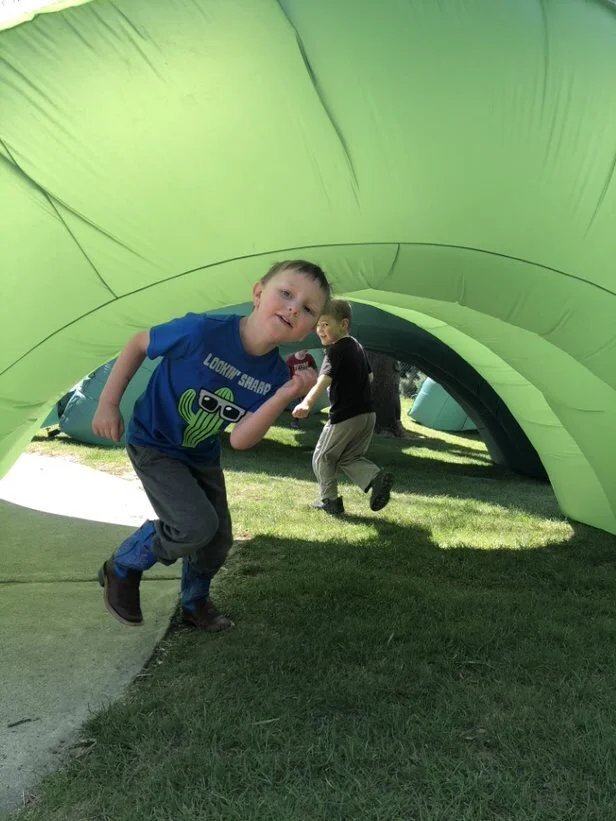Inflatotecture
2019
Today, the amount of time that children spend outside is alarmingly low, only minutes per day, while screen time is at an all-time high. The average American child spends only minutes a day in unstructured play outdoors while they spend 7 hours in front of the screen. This disparity in time spent outside versus time spent inside has become so extreme that it is now known as “Nature deficit disorder.” Washington State University’s third year design-build social outreach studio aimed to restore the relationship between children and nature using inflatable structures. This inflatable installation increases the interaction between kids and outdoor spaces to help the kids build confidence, get moving, be happier, be more creative, reduce stress and fatigue, and eventually offer them a greater role to shape their built environment. This is an indoor and outdoor lightweight portable installation consist of a series of inflatable pieces.








Each of these pieces are designed in a way that can be combined with the other pieces and create many different combinations. We have 3 main types: tunnels, donuts, and domes. Kids can combine and get different results each time. They can be all together or separate from each other. The project installed where the underutilized playground is.





To move beyond schematic design, and offer students an experiment on real-world design issues, as a design-build endeavor, this studio provided a hands-on atmosphere of three-dimensional reality for collaborative and consensus design experience, Learning-by-doing, detailing challenges, and construction strategies. The pedagogical framework was defined around various considerations, helping students overcome challenges in construction know-how, construction management, structural specifications, budgeting, client interaction, and material properties.






